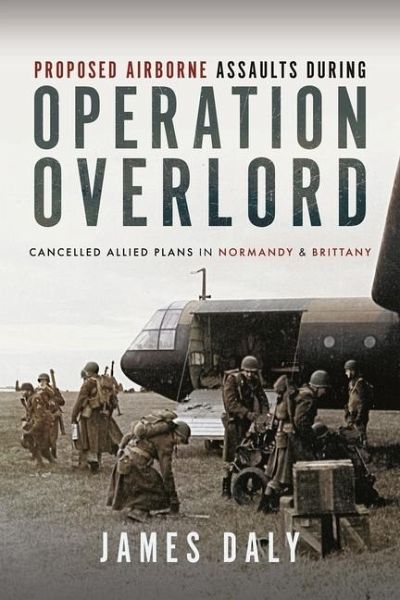
Proposed Airborne Assaults during Operation Overlord
Cancelled Allied Plans in Normandy and Brittany
Versandkostenfrei!
Versandfertig in über 4 Wochen
22,99 €
inkl. MwSt.
Weitere Ausgaben:

PAYBACK Punkte
11 °P sammeln!
The airborne landings on D-Day played a major part in the success of the largest amphibious operation ever mounted. Yet just over three months later Operation _Market Garden_, the largest airborne operation ever attempted, failed to take all its objectives. It is notable, however, that in the film _A Bridge Too Far_ Dirk Bogarde's Lieutenant General 'Boy' Browning refers to a large number of cancelled operations since D-Day. What were these operations? Why do we know so little about them? And what can they tell us about Allied airborne planning, and the way that the allies fought, in 1944?As J...
The airborne landings on D-Day played a major part in the success of the largest amphibious operation ever mounted. Yet just over three months later Operation _Market Garden_, the largest airborne operation ever attempted, failed to take all its objectives. It is notable, however, that in the film _A Bridge Too Far_ Dirk Bogarde's Lieutenant General 'Boy' Browning refers to a large number of cancelled operations since D-Day. What were these operations? Why do we know so little about them? And what can they tell us about Allied airborne planning, and the way that the allies fought, in 1944?As James Daly reveals, plans were considered or drawn-up for a number of ambitious airborne assaults that could have formed part of the Allies' efforts to break out of the beachheads. Of these, three, operations _Wastage_, _Tuxedo_ and _Wild Oats_, might well have been part of the fighting in Normandy itself. Operation _Wild Oats_, for example, was to see the 1st Airborne Division help capture Caen in conjunction with the British I Corps and XXX Corps. Three others, operations _Beneficiary_, _Hands Up_ and _Swordhilt_, were to be combined airborne and amphibious descents to seize the vitally important ports of St Malo and Brest, as well as the Quiberon Bay area in southern Brittany.Airborne planning was frenetic and wide ranging during this period. One operation would have seen gliders landing on a beach; another would have seen the airborne troops taking off without maps. Some of them were months in the planning; others were merely an idea that lasted for a matter of days. Far from being standalone airborne operations, all of them were part of a wider strategy and several were major combined operations, effectively small-scale D-Days, complete with seaborne landings.For the first time, this book looks at each of these operations in detail. Using new research and drawing on original planning documents, including maps of planned drop zones and operational areas, most of which have never been published before, James Daly explores a little-known aspect of the Allies' landings in France in the summer of 1944.













